#aarhus university
Text
When you go running in the woods in your running tights, elastane is the reason they fit you so comfortably. Elastane is an elastic material that allows the fabric to stretch and adapt to your body.
But when elastane fibres are mixed with cotton, wool, nylon or other fibres, as is the case in many clothes today, the clothes become almost impossible to recycle. It is extremely difficult to separate out the different fibres, and therefore the materials in the clothes cannot be recycled.
For this reason, clothes and other textiles are among the materials that we are the worst at recycling. Only about six per cent of clothes thrown away by Danish households are recycled. In comparison, 32 per cent of all plastic packaging is recycled in Denmark.
Read more.
49 notes
·
View notes
Text
Mai ajánlatunk. Némileg csökkenthető vele a süti beállításokra elcseszett idő.
#consent-o-matic#chromium#Firefox#Safari#consent management provider#cmp#Centre for Advanced Visualisation and Interaction#cavi#aarhus university
26 notes
·
View notes
Text
HRH Crown Prince Frederik of Denmark Gives an Opening Speech at the Public Management in the Future Conference.
HRH Crown Prince Frederik of Denmark Gives an Opening Speech at the Public Management in the Future Conference.
On the morning of Monday, May 23, 2022, His Royal Highness Crown Prince Frederik of Denmark arrived at the Aarhus Universitet to attend the conference, Public Management in the Future.
The conference, held inside the Crown Prince Frederik’s Center for Public Management, focused on several themes including, “…acute crisis management and the long-term perspectives…” as well as “what can public…

View On WordPress
2 notes
·
View notes
Text
Study in Denmark with 3-Year Work Permit After Graduation
Study in Denmark with 3-Year Work Permit After Graduation: SNY Cosmos, the leading overseas education consultants in Bangalore, Chennai, Vijayawada and Hyderabad, can help you achieve your dream of studying in Denmark. Denmark is a beautiful country with a high standard of living and education. After graduation, international students are eligible for a 3-year work permit, which gives them the opportunity to stay and work in Denmark. Contact SNY Cosmos today to learn more about studying in Denmark at https://snycosmos.com/study-in-denmark-with-3-year-work-permit-after-graduation.html

#overseas education consultants in hyderabad#overseas education consultants in bangalore#scholarships in italy#masters in france#masters in netherlands#study in Denmark#Aarhus University#Europe#Vijayawada#Chennai#Study abroad consultant#work permits
0 notes
Text
Improvisation and creativity in professional jazz musicians
Improvisation and creativity in professional jazz musicians
Newswise — World-renowned jazz musicians are often praised for their creative ingenuity. But how do they make up improvisations? And what makes artists’ solos more enticing than those of less skilled players? These questions continue to puzzle not only jazz aficionados, but also psychological researchers. Two leading theories have dominated so far: Either musicians learn to master rules telling…
View On WordPress
#Aarhus University#All Journal News#arts and entertainment#Cognition and Learning#Newswise#Psychology and Psychiatry
0 notes
Text
The Weight Of The Vacuum: A Scientific History Of Dark Energy
[The Weight of the Vacuum: A Scientific History of Dark Energy. By: Helge S Kragh, James M Overduin. Ist Edition. Date: 5 June 2014. Publisher: Springer, Berlin, Heidelberg. Series: SpringerBriefs in Physics. Pages: 121. Illustrations: 23 black and white. Dimensions: 15.49 x 0.71 x 23.5 cm. ISBN: 978-3-642-55089-8.(Thanks to publisher for publishing information)]
One of the most surprising and fascinating aspects of astrophysics and cosmology today is the notion of ’dark energy‘ and its evil twin ’dark matter‘. These are not in quotes to suggest that they are somehow fictitious; rather, this is to call them out as significant topics that have dominated much of the current discussion in modern physics dealing with gravity, expansion (or not) of the universe, and other issues that drive humanity’s relentless quest to understand our place in the grand scheme of reality.
It is difficult to appreciate where these issues and questions arise without understanding the sort of thinking that preceded the modern view. This tidy monograph does an outstanding job of filling in those historical blanks, so to speak. Starting with Aristotelean logic from ancient Greece and moving smoothly through the salad days of Isaac Newton into the twentieth century and beyond, this book demonstrates the evolution of natural science (previously referred to as natural philosophy, which might actually be a better choice today!) from pure empiricism to hypotheses borne from mathematical considerations. And lying in wait amid all of these intellectual perambulations is dark energy.
So, what is dark energy? Put simply, no one really knows! In one respect, the existence of dark energy can be seen to follow logically from quantum mechanics (and its smarter younger sibling, quantum field theory) and the famous Uncertainty Principle from Werner Heisenberg. This latter principle states that it is impossible to simultaneously measure both the position and the momentum of an object to arbitrary precision. The idea is that any such measurement of one property inherently perturbs the other – you can’t get something for nothing. However, the Uncertainty Principle has far-reaching implications in related measurements. For example, this means that there is no such thing as a perfect vacuum – the complete absence of any sort of matter (or energy) in a parcel of empty space. That’s because if such a thing were possible, then an observer could state that the parcel of empty space has zero energy and zero mass, ie we know where the parcel is (exactly) and we know what its exact momentum is (zero). The Uncertainty Principle says that this is a no-no. A cartoon may illustrate this more succinctly:
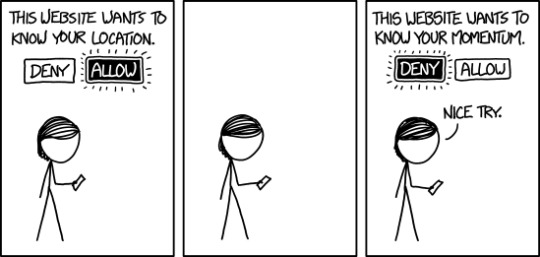
The key is to focus in on the energy element of the previous assertion. In all of the universe, empty space and all, there is something called the zero-point energy. What this means (loosely) is that even empty space ‘contains’ energy. In fact, the energy content of empty space is quite large indeed, although exact computation of its value has proved elusive. But nearly every astrophysicist agrees that this mysterious energy budget accounts for the lion’s share of energy in the universe in total – certainly greater than 50%, and by some estimates, as much as 90% of the universe Actually that’s only partially true; due to Einstein’s famous equation, E = mc2, energy (E) and mass (m) are essentially interchangeable, so lumped in with the energy budget is an implicit mass budget into which the energy can convert under certain conditions.
So what does all of this dark energy (and matter) mean for our understanding of cosmological properties? It’s a mixed bag – on the one hand, one property of dark energy and matter is that they don’t appear to directly interact with ordinary energy and matter (which means we can’t directly observe either one), but on the other hand, they do appear to be driving a large portion of the dynamics we can see through telescopes and other instruments. For instance, dark matter is thought to be integrally involved in the unusual speed of rotation of the outer arms of many (most?) galaxies (although there is a modern theory - called MOND - that might offer a different explanation of this phenomenon without needing dark matter). Similarly, dark energy is thought to explain much of the noted expansion of the universe in all directions, sort of like an explosion into the void.
It’s a highly technical and controversial area of modern physics. This monograph will set the stage for the reader; further research will require delving into the more academic journals and texts to see what’s really going on (or what we think is going on). There are whispers of superluminal (faster-than-light) particle movement, arrow of time reversal, and other exotic ideas all wrapped up with dark energy and dark matter. This book invites the reader to take the next step and check out what this could mean in a larger sense.
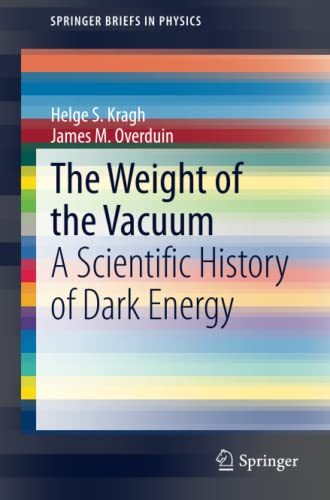

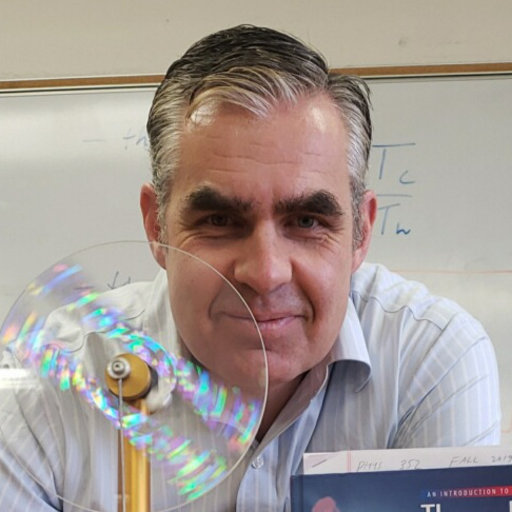
[Photo credits (with thanks to copyright holders) top to bottom: Cartoon: © Copyright holder. Cover: © Springer. Portrait of Helge S Kragh © Copyright holder. Portrait of James M Overduin © Towson University USA]
Kevin Gillette
Words Across Time
9 September 2022
wordsacrosstime
#Kevin Gillette#The Weight Of The Vacuum#Words Across Time#wordsacrosstime#September 2022#Helge Kragh#James Overduin#Springer#Dark Energy#Vacuum#Dark Matter#Towson University#Aarhus University#Cosmological Constant#Cosmological Vacuum Energy#Ether in Physics#History of Cosmology#Inflation in the Early Universe#Variable Physical Constants#Zero-point Energy#Vacuum Energy#Physics#Nernst’s Cosmic Quantum-Ether#Planck’s Second Quantum Theory#Cosmology#Philosophy of Science#Philosophical Foundations of Physics and Astronomy#Aristotle#Isaac Newton#Uncertainty Principle
1 note
·
View note
Photo

Aarhus, here I come!!!
The day before yesterday, I got a letter from the student loan office telling me I will get Bafög and how much I will get. A few weeks earlier, I would have celebrated like mad but after all this trouble, I was wary; as my administrator had rejected all documentation for my expected studying date, I was unsure whether I still had to submit that form or whether the new letter had rendered the old obsolete. So I wrote her an email but got an automatic reply that she’s on holiday. Today, I wanted to phone her replacement but checked my mails before and, just as I had hoped, I had an answer by yet another administrator probably relatively in my favor! Yay! Whooooopwhoooooooooop!
Also today, I asked at the study service of the uni where their promised answer was. (Previously, I had written with the wrong people, which I found out because I phoned them and the girl talking to me told me they were all students there and don’t have the permission to do what I asked of them. She then told me who might be able to help me. I don’t know why the guy I wrote with wasn’t able to tell me so. Admittedly, I could have called them sooner.) Whatever, they told me someone forwarded it to someone on holidays for whatever reason but now they signed it themselves. So I even got my filled in form and I am sure now that I can submit the same form for when I am officially admitted. Double yay!!
Also the day before yesterday, my parents came over and brought some empty banana boxes for moving and took some full banana boxes and sushi paper bags filled with books (one of them tore on my mother’s way down, oopsies). But more importantly, we went to pick up a very cheap used loft bed. I was a bit sceptical it was that cheap. But the people were really kind and the bed seemed in condition, they even still had the assembly instructions and provided us with a blanket, because my parents forgot theirs. (Fun fact: the bed is exactly the one we have at home just as a loft bed, which was what I dreamed of as a kid, so, years later a dream come true, lol.) So I have a bed and space now! Triple yay!!!
I am so glad the student loan matter resolved now. Now I need to sort out the issue with my health insurance, which might prove similarly nerve-wracking. But I managed this, then this will work out, too!
1 note
·
View note
Text
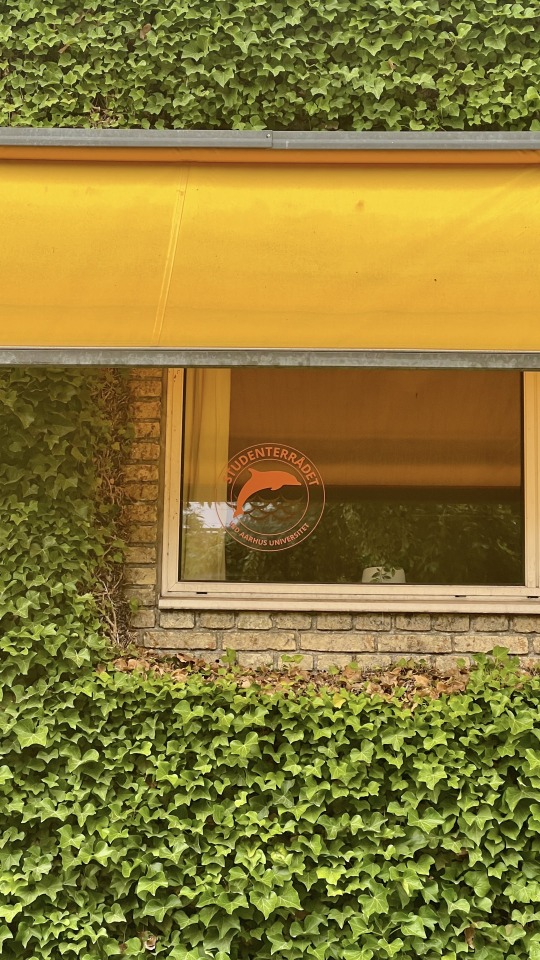


🇩🇰 Aarhus University 🐬
#denmark#aarhus#aesthetic#aesthetics#travel#traveling#university#school#school aesthetic#daily#dailyphoto#travelphotography#photo diary#green#city aesthetic
3 notes
·
View notes
Text
dear tumblr friends!!
it’s official - i’m moving to Denmark for the next half of the year!
does anyone know any danish people? i’m struggling with the language and would love to have a language parent or just someone who’d tell me where to get good vegan food and where the alternative clubs are at in Aarhus and Copenhagen!
#exchange#dream come true#aarhus#denmark#langblr#danish#copenhagen#via university#social education#or yknow just be my friend
4 notes
·
View notes
Text
I'm filling out a survey related to a study by a university. It's about political alignment and internet debate, and one of the sections is about rating how much you agree with some statements.
Including:
"Revenge has to be quick and dirty"
and
"I like having sex with people I barely know"
Holy shit, University of Aarhus, who hurt you?
#Survey#University of Aarhus#ARE YOU OKAY AU???#revenge#I personally think that revenge is best served so slowly and refined that no one sees it coming#A bit like the spanish inquisition
0 notes
Text

Old mattresses made new: Simple chemistry can recycle polyurethane
It created something of a stir back in 2022, when researchers from Aarhus University announced a new and inexpensive way of breaking down polyurethane (PU) plastic into its original components, which can then be recycled into new PU material instead of ending up in landfills or incinerators.
Now, together with Plixxent A/S, Dan-Foam Aps and the Danish Technological Institute as part of the Danish RePURpose consortium, the same researchers have proven that the method can be used to tackle flexible foam polyurethane.
They have broken down approximately 1.5 kilos of foam mattress, extracted its main components, and used one of them, polyol, as a raw material in a new piece of mattress. By replacing "fresh" polyol, which is primarily produced from crude oil, with polyol extracted from the old mattress, the researchers have replaced 64% of the mattress, without impairing quality in any way.
They have also demonstrated that the process can be repeated several times. In other words, the polyol can be re-extracted from polyurethane foam and reused again.
Read more.
#Materials Science#Science#Polyurethane#Polymers#Recycling#Plastics#Materials processing#Aarhus University
12 notes
·
View notes
Text
Cookie pop-ups are designed to be confusing and make you 'agree' to be tracked. This add-on automatically answers consent pop-ups for you, so you can't be manipulated. Set your preferences once, and let the technology do the rest!
This add-on is built and maintained by workers at Aarhus University in Denmark. We are privacy researchers that got tired of seeing how companies violate the EU's General Data Protection Regulation (GDPR). Because the organisations that enforce the GDPR do not have enough resources, we built this add-on to help them out.
We looked at 680 pop-ups and combined their data processing purposes into 5 categories that you can toggle on or off. Sometimes our categories don't perfectly match those on the website, so then we will choose the more privacy preserving option.
I've been using this since it came out in December 2019 (how time flies!) and definitely recommend it.
7K notes
·
View notes
Text
For years, scientists have debated whether humans or the climate have caused the population of large mammals to decline dramatically over the past several thousand years. A new study from Aarhus University confirms that climate cannot be the explanation.
About 100,000 years ago, the first modern humans migrated out of Africa in large numbers. They were eminent at adapting to new habitats, and they settled in virtually every kind of landscape—from deserts to jungles to the icy taiga in the far north.
Part of the success was human's ability to hunt large animals. With clever hunting techniques and specially built weapons, they perfected the art of killing even the most dangerous mammals.
Continue Reading.
170 notes
·
View notes
Text
Textbooks on biology and forestry make it clear that large parts of Europe would naturally be covered by dense forests.
The textbook narrative is that our ancestors felled the forests, drained the swamps and cultivated the heathland. In other words, they created the varied landscapes of meadows, heaths and grasslands that characterized our cultural landscapes before the advent of modern agriculture.
But new research from Aarhus University suggests that this is not the case. Elena Pearce, postdoc at the Department of Biology at Aarhus University, and the lead author of the study explains.
“The idea that the landscape was covered by dense forest across most of the continent is simply not right. Our results show that we need to reassess our view of what European nature is," she says, and her colleague and co-author Professor Jens-Christian Svenning continues:
“Nature during the last interglacial period – a period with a mild climate similar to today, but before modern humans arrived - was full of variation. Importantly, the landscapes harboured large amounts of open and semi-open vegetation with shrubs, light-demanding trees and herbs alongside stands of tall-growing shade trees.”
[...]
According to calculations from the new study, somewhere between 50 and 75 per cent of the landscape was covered by open or semi-open vegetation. And this is most likely due to the large mammals that lived at that time, explains Jens-Christian Svenning.
"We know that a lot of large animals lived in Europe at that time. Aurochs, horses, bison, elephants and rhinos. They must have consumed large amounts of plant biomass and thereby had the capacity to keep the tree-growth in check," he says and continues:
"Of course, it’s also likely that other factors such as floods and forest fires also played a part. But there’s no evidence to suggest that this caused enough disturbance. For example, forest fires encourage pine trees, but mostly we did not find pine as a dominant species.”
Although the research group cannot be 100 percent certain about the extent to which large animals were behind the open areas, there are strong indications that they were. Firstly, large animals such as bison have exactly that effect in areas where they are still found in European forests. Furthermore, beetle fossils from the last interglacial period also show that many large animals lived at that time.
“We have looked at a number of finds of beetle fossils from that time in the UK. Although there are beetle species that thrive in forests with frequent forest fires, we found none of them in the fossil data. Instead, we found large quantities dung beetles, and this shows that parts of the landscape have been densely populated by large herbivores," he says.
#trees#forest#wood pasture#ecology#prehistory#more evidence against the closed canopy hypothesis#emphasis added
142 notes
·
View notes
Text

Stakladen-Aarhus University in Aarhus, Denmark, 4/16/72.
35 notes
·
View notes
Text
Denmark - where the museums are progressive enough to erase woman from their names but the royal couple know who can be exploited for a baby.
A statue of a naked, bearded man attempting to breastfeed an infant is drawing disapproval on social media for what some critics are calling female erasure. The nude figure, constructed in 2021 as a self-portrait by Aske Kreilgaard, is depicted with exposed male genitals and breasts to which he is holding a feeding baby.
Despite having been created to commemorate International Men’s Day, the statue has now been placed outside of The Gender Museum (KØN) in Aarhus, Denmark, which was previously known as the Women’s Museum (Kvindemuseet).
The facility was originally founded in 1982 to educate the public about women’s history, but in 2021 was renamed to reflect a shift in focus towards topics of gender and sexuality.

The Gender Museum justified the decision to change its name by claiming that gender roles had “changed significantly,” and that the emphasis of the museum would be focused to shift towards “freer expression” of all genders.
“A lot has happened in the relationship between the sexes since the Women’s Museum Association saw the light of day. Men’s gender roles and function in society have also changed significantly,” the museum’s website stated.
“The cultural heritage rests in places on old divisions between genders and roles, while the present expects freer expression of all genders. Just as women’s research at universities today is called gender research, the museum has followed the same development in its ongoing depiction and documentation of cultural history.”
The former Women’s Museum first began to incorporate elements of gender ideology into their education programs in 2016 and currently offers sex education for children in primary school “through a culture-historical and norm-critical view of sexuality and gender.”

“The societal norms that [children] experience on their own bodies are set against cultural history through objects from the history of sexual culture. In this way, we show the students that sex, gender roles and understandings of sexuality are rooted in our cultural history, and that ideas about gender, sexuality and sexual practices have changed over time,” reads the description of the course on the museum’s website.

The sculpture’s creator, Kreilgaard, has said in an interview with Fine Spinde that he titled the work Agape, a Greek word meaning “love.”
Just after the statue was erected, sculptor, photographer and writer Suste Bonnén sharply condemned the museum’s decision to commission and feature the piece in an article published by Kristeligt Dagblad titled, “Statue of breastfeeding man is a pedophile’s dream.”
“Isn’t Agape a pedophile’s dream? A grown naked man who enjoys putting a small child up to his nipple for him to suck is to me the epitome of what pedophiles dream of,” Bonnén writes. She further elaborates on how the area is an erogenous zone for both women and men, but highlights that whereas “the mother satisfies the child’s needs,” a man, being incapable of nursing, “only satisfies his own.”
Bonnén went on to describe the statue as flouting exploitation.
“I don’t see that the gender roles are being played with, as many others do. I see an exploitation of the little child, and a man playing with his own gratification. That is why I find it disturbing that both genders and audiences today welcome the message: The grown man can do whatever he wants with a small child, as long as we call it Agape.”
While the statue was erected outside of the museum in November of 2021, photos of it just began circulating in social media this week and prompting backlash. On Facebook, some Danish feminists noted that they had attempted to protest the name change of the museum in 2021, but found their concerns being ignored as museum officials reportedly felt shifting away from “women” and towards “gender inclusivity” was a better financial decision.
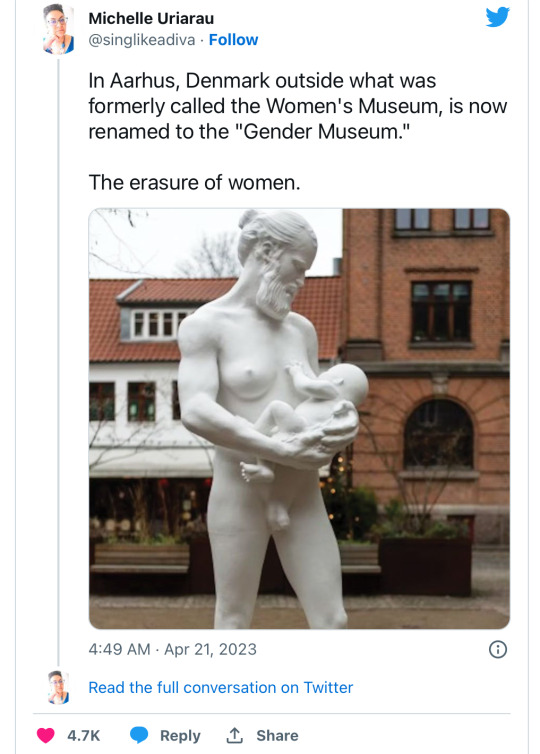
The photo of the statue that first prompted discussion on Twitter was posted by Michelle Uriarau of Mana Wāhine Kōrero, a Māori women’s group. Uriarau also referenced the name change at the museum, calling it “the erasure of women.”
Over one thousand people replied to Uriarau’s post, some of whom were expressing disbelief that the statue was even real. Many Twitter users were outraged at the symbolism, and the fact the statue was now housed outside of a former museum dedicated to women.
“The parading and exhibiting of the male sexual fetishist. Only women give birth and only women breastfeed NOT men,” user Elise Willows wrote beneath the photo.
“A nursing baby as the ultimate fetish accessory. Disgusting,” another tweeted.
Others in the replies referenced recent attempts to “neutralize” the language around motherhood and breastfeeding, something that has been shown to have a negative impact on maternal health outcomes. Some also referenced incidents involving trans-identified males attempting to breastfeed babies.
Last year, Reduxx reported on a Reddit post featuring photos of a trans-identified male user breastfeeding his wife’s newborn baby.
The post, titled “Oh my God I’m breastfeeding my daughter,” detailed how the user worked with a lactation consultant and his gender physician for several months prior to his female partner giving birth. Immediately following the baby’s birth, the user said he had begun breastfeeding the child to supplement formula feedings. The user also included a link to a photo gallery showing snapshots of himself “breastfeeding” the baby.
In 2018, an endocrinologist from Boston Medical Center claimed that breast feeding was an important method of validating a trans-identified male’s gender identity.
In an interview with The New Scientist, Dr. Joshua Safer said: “Many transgender women are looking to have as many of the experiences of non-transgender women as they can, so I can see this will be extremely popular.”
Reports of trans-identified males seeking support from lactation consultants have increased. On social media, many new and breastfeeding mothers have also stated they’ve noticed an increase in men attending breastfeeding groups.
According to the Danish Agency for Culture and Palaces, of about 2,500 monuments nationwide, only 28 commemorate women. The nation’s lack of female-focused memorials was the subject of a 2022 sculpture project that highlighted the lack of visibility of women in public art.
Reduxx contacted the Gender Museum for comment, but did not received a response at the time of publication.
By Genevieve Gluck
Genevieve is the Co-Founder of Reduxx, and the outlet's Chief Investigative Journalist with a focused interest in pornography, sexual predators, and fetish subcultures. She is the creator of the podcast Women's Voices, which features news commentary and interviews regarding women's rights.
Prince Gustav of Sayn-Wittgenstein-Berleburg and his wife, Princess Carina, are expecting a baby. However, the princess lacks the usual baby bump. Instead, another woman is carrying her child.
Both the prince, who is a nephew of the Danish queen Margarethe and his wife are 54 years old. They had to wait almost 20 years before they could get married due to an inheritance rule from Gustav's grandfather Prince Gustav Albrecht, who was a Nazi, Daily Mail writes. Now, they are becoming parents in their fifties with the help of a surrogate mother.
Royal fans have already claimed that the baby is a boy and is due to be born in May. Official sources have not confirmed the announcement yet. According to a press release from Berleburg Castle, the residence of the royal couple in Germany, the baby is due in the summer. The prince and princess state their thanks in the same press release "to everyone who has helped to find a legal path to follow."
According to Kristeligt Dagblad, the baby will be the first royal child born via surrogacy. It is unknown whether the couple has paid the surrogate mother for her service (commercial surrogacy) or whether they found someone who offered to carry the baby altruistically, the Danish newspaper reports.
Debate
The royal surrogacy baby may renew the discussion about surrogacy in Denmark. Currently, it is legal to have a child via a surrogate mother, but there are quite a few requirements that have to be fulfilled. It is, for example, illegal to get help with insemination, and third parties may not communicate with the surrogate mother.
Leif Vestergaard Pedersen, chairman of the Danish Ethics Council, finds the rules too restrictive. Last January, the council proposed to make surrogacy a standard fertility treatment, Kristeligt Dagblad reports. At the same time, Vestergaard Pedersen warns against commercial surrogacy "because it can in many ways be equated with trade in children."
Age limit
Another concern about the royal baby is the age of its parents. Being 54 years old is a relatively high age for first-time parents, Kristeligt Dagblad states. However, Vestergaard Pedersen thinks this is not something the Ethical Council is concerned with. "There is an age limit in fertility treatment, probably primarily for the sake of the woman giving birth. Regarding more general considerations, parents' age is a consideration. Still, it is not something we have discussed or have immediate plans for", he says.
Fertility doctor Malene Tanderup Sørensen points out that there is no biological age barrier regarding surrogate parenthood. "However, the fact that they are older is one of the things that can help put the debate on surrogacy at the forefront."
Happiness
In any case, the royal family welcomes the baby with happiness. Lene Balleby, a spokesperson for the family, says that the royals "are very happy on behalf of the couple."
Historian and royal house commentator Lars Hovbakke Sørensenpoints out that the royal house is usually more conservative than the general population. However, he thinks the difficulties the royal couple overcame to get married "can help to create more understanding around their decision about surrogate motherhood."
They could have gotten married earlier but he would have lost his inheritance due to the will his Nazi grandfather left.
#Denmark#men can’t breastfeed#the Women’s Museum (Kvindemuseet) is now the Gender Museum (KØN)#Gender inclusivity was a better financial decision#Only 28 of 2500 of Danish monuments commemorate women#Prince Gustav of Sayn-Wittgenstein-Berleburg#Princess Carina#no one is entitled to children#Both parents will be 75 when the kid turns 21#Exploiting women
105 notes
·
View notes